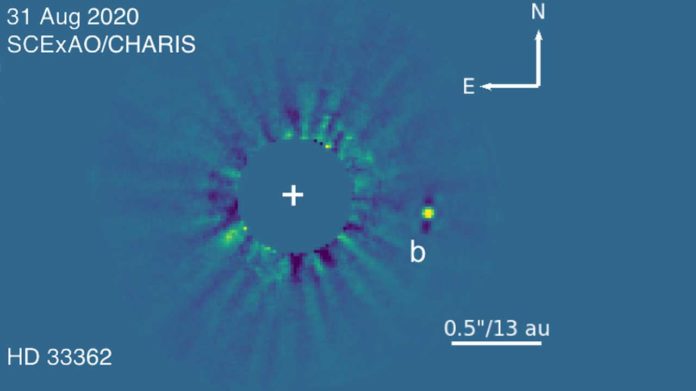Recently, astronomers have a brown dwarf orbiting a sun-like star 86 light-years from Earth. The discovery of this brown dwarf- that has a mass of about 46 Jupiters- was made using two Maunakea Observatories—Subaru Telescope and W. M. Keck Observatory.
Subaru Telescope first detected and captured remarkably sharp pictures of the object. Following observations were conducted to take more direct and infrared images of the object. They found that the object is an orbiting companion to the star HD 33632 Aa, not an unrelated background star.
The team snapped pictures of the HD 33632 system using powerful adaptive optics (AO) technology at both Maunakea Observatories—Subaru Telescope’s state-of-the-art exoplanet imaging system, SCExAO/CHARIS, and Keck Observatory’s advanced AO paired with its Near-Infrared Camera (NIRC2). These technologies remove the atmospheric blurring that distorts astronomical images, resulting in sharper images.
The data also revealed that there are water and carbon monoxide present in the brown dwarf‘s atmosphere.
Thayne Currie, an affiliated researcher at Subaru Telescope and lead author of this study, said, “Thanks to SCExAO/CHARIS’s incredibly sharp images, we can not only see HD 33632 Ab but get ultra-precise measurements for its position and its spectrum, which gives important clues about its atmospheric properties and its dynamics.”
“Keck Observatory’s NIRC2 thermal infrared data allowed us to understand better how HD 33632 Ab’s atmosphere compares to those of the first directly imaged exoplanets, HR 8799 bcde, which were discovered in part by Keck.”
Journal Reference:
- Thayne Currie et al. SCExAO/CHARIS Direct Imaging Discovery of a 20 au Separation, Low-mass Ratio Brown Dwarf Companion to an Accelerating Sun-like Star, The Astrophysical Journal (2020). DOI: 10.3847/2041-8213/abc631
